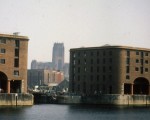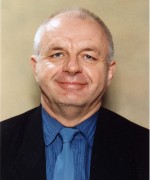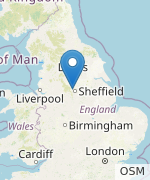Liverpool's Heritage
Mike Higginbottom SpeakerNet Sponsor
- Region:
- Anywhere
- Notice Period:
- Emergency (maybe less than one week's notice)
- Type:
- Architectural and social history
- Fee:
- Paid: Dependent on size of audience and distance travelled from South Yorkshire
- Category:
- History
- Updated:
- 23rd November 2017
- Tagged:
- Liverpool | Victorian Architecture | Industrial Cities
Liverpool began as a fishing village in the thirteenth century, but grew rapidly in the eighteenth century with the growth of sea trade, becoming Europe’s greatest Atlantic seaport during its heyday. The wealth its commerce generated produced a magnificent cityscape, great architecture and a rich cultural heritage, particularly in fine arts and music. The increasing size of ocean-going vessels has diverted the traffic elsewhere on the Mersey estuary, and the city’s recent history largely concerns its attempts to find a new role to play in the national economy, most recently through the Capital of Culture 2008 initiative.
The study-day covers the development of the city and port of Liverpool and the wealth of its nineteenth- and twentieth-century architecture in three sections: Liverpool’s Wealth – an introductory account of the city’s history; Liverpool’s Architecture – a survey of the major buildings of the city-centre; Liverpool’s Hinterland – examples of the rich environments of Liverpool’s suburbs.
The lecture gives an insight into the historic development of the city and port of Liverpool, focusing on the wealth of its nineteenth- and twentieth-century architecture, in particular St George’s Hall – “the World’s finest building” – (Harvey Lonsdale Elmes & C R Cockerell 1841-54), the Anglican Cathedral (Sir Giles Gilbert Scott & Frederick Thomas 1903-79) and the Catholic Cathedral (Sir Frederick Gibberd 1962-7), and such unexpected gems as Oriel Chambers (Peter Ellis 1864), the Philharmonic Hotel (Walter Thomas 1898-1900) and the Olympia Theatre (Frank Matcham 1905).
Views: 1712 | Enquiries: 0About Mike Higginbottom
I am a Sheffield-based freelance history lecturer specialising in the nineteenth and twentieth centuries with a background in university extramural education.
I offer distinctive, life-enhancing insights into the past, particularly the recent past, for people who enjoy visiting places and recognising the human stories behind this historical heritage.
I've lectured for the Arts Society (formerly the National Association of Decorative & Fine Arts Societies [NADFAS]) in the UK, Spain, Australia and New Zealand since 2005.
Whether lecturing, writing or guiding tours, I provide detailed information in a lucid and entertaining way. My publications and lectures are copiously illustrated, as much as possible using my own photography.
Mike Higginbottom Interesting Times is the brand for my history education work – tours, lectures and publications. My blog is a fund of interesting, sometimes quirky insights into places, people and historical events.
I'm based in Sheffield and willing to travel anywhere in the UK or further afield.
Other Talks on SpeakerNet by Mike Higginbottom
- The Big Apple: the architecture of New York City
- Windy City: the architecture of Chicago
- St Pancras Station & Hotel
- Manchester's Heritage
- Fun Palaces: the history and architecture of the entertainment industry
- All the World's a Stage: the development of theatre buildings
- Dream Palaces: an introduction to cinema architecture
- Away from it all: the heritage of holiday resorts
- Beside the Seaside: the architecture of British coastal resorts
- Blackpool's Seaside Heritage
- Yorkshire's Seaside Heritage
- Victorian Cemeteries
- Victorian Sewerage
- Temples of Sanitation
- English Country Houses – not quite what they seem
- Sheffield's Cinema Heritage
- Demolished Sheffield
- A Look Round Attercliffe
- Waterways and Railways across the Derbyshire Peak
- Waterways and Railways across the Northern Pennines
- Waterways and Railways between Thames and Severn
- The Derbyshire Derwent Valley
Send a message to the speaker
If you are interested in this talk and wish to contact the speaker, please complete the following form:


